 Deng Xiaoping: 'I have a clear conscience all my life'
Deng Xiaoping: 'I have a clear conscience all my life'
 Xi Jinping: 'The people are our strength'
Xi Jinping: 'The people are our strength'
 Amazing cliff diving in cold winter
Amazing cliff diving in cold winter
 Enjoy Sochi 2014 in slow motion
Enjoy Sochi 2014 in slow motion
 University student sentenced to death for poisoning roommate
University student sentenced to death for poisoning roommate
 Chinese lunar New Year celebrated in San Francisco
Chinese lunar New Year celebrated in San Francisco
 Taiwan Lantern Festival 2014
Taiwan Lantern Festival 2014
 Haiyang Yangge: make up
Haiyang Yangge: make up
 China's top 10 richest cities
China's top 10 richest cities
BEIJING, Feb. 26 -- Chinese President Xi Jinping visited Beijing's hutongs in the heavy smog on Tuesday, calling for strengthened efforts to address pollution and improved city management.
Such a visit by Chinese leaders is rare, but it is not the first time Xi has made such a surprise appearance among ordinary people, moves that show his populist approach.
Xi visited trendy Nanluoguxiang Hutong and walked along the banks of a nearby river on Tuesday. He also visited Beijing Planning Exhibition Hall, Capital Museum, a water plant and the command center of Beijing's subway.
IMPROVED CITY MANAGEMENT
Xi visited courtyard homes on Nanluoguxiang, a popular tourist spot famous for its boutiques, restaurants and bars.
He stopped to ask about residents' work, salary, the materials they burn for cooking and heating, as well as how far their homes are from the nearest toilet.
"I am familiar with this region, and today, I come here to visit old neighbors and listen to your opinions on renovation of the old urban district," Xi said.
Renovation work should be carried out in accordance with residents' different aspirations and demands, according to the president, who called on the public to better understand and support the government's decision to carry out such work.
After learning of Xi's visit to the hutongs, residents crowded around and greeted the President. Xi shook hands with many and wished them a better life.
He later came to the Beijing Planning Exhibition Hall to learn the capital's history, geographical conditions, planning and functional orientation.
Xi said scientific planning will produce maximum benefits, while planning faults will be the greatest waste. He added that the capital should stick to people-oriented and sustainable development in city planning.
During his visit to the command center of Beijing's subway, he inquired about procedures of subway operation, safety management and ways of assessing passenger flow.
He asked for strict subway security checks and rigor in safety operations.
The president noted that resolving the city's travel difficulties is a huge problem, calling for priority to be given to finding ways to ease traffic congestion.
Next was Beijing's Capital Museum on Tuesday afternoon, where Xi asked officials to attach equal importance to exhibition and the compilation of history in order to inspire national pride and confidence.
He noted that long-term painstaking efforts are needed to ensure Beijing's sustainable and sound development.
Officials were also urged to clarify the city's strategic position and strengthen its function as the center of national politics, culture, international communication and technological innovation.
Xi called for optimization of industrial structure, a focus on high-end, service and low-carbon-oriented industries, effective limiting of population size and promotion of regional balanced development.
The president also wants improved city infrastructure and city management.
POLLUTION BATTLE
Xi's tour came as Beijing and other areas in north China have been shrouded in heavy smog in recent days. China's Ministry of Environmental Protection said earlier this week that 800,000 square km of land in China suffered heavy air pollution.
On Tuesday, the city maintained an orange pollution alert, as the density of PM2.5, or particles smaller than 2.5 microns in diameter, measured over 400 in the city proper.
The smog drew wide social complaints and criticism despite authorities' efforts in addressing the issue, and left masks in Beijing out of stock. But Xi did not wear a mask.
The heavy air pollution eased on Wednesday evening as a cold front arrived.
When visiting the water plant, Xi said environmental protection in the megacity of Beijing is a job for systematic engineering, and much attention should be paid to it as air pollution is a major issue concerning people's livelihood.
"We should treat both symptoms and root causes of environmental pollution, focusing both on emergency and regular measures," said the President, adding that the issue should be addressed through coordination between different areas and with action by the whole society.
At a symposium after the tour on Wednesday, Xi called for strengthened efforts to control smog. He said the priority is to limit PM2.5 by reducing dependence on coal, strictly controlling vehicles and adjusting industry structures.
He also urged related departments to strictly implement an index system used to evaluate officials' performances, and to strengthen law enforcement on environmental issues.
Vice Premier Zhang Gaoli attended the symposium.
CLOSE-TO-PEOPLE STYLE
Xi's surprise hutong tour typified his political style, which is quite different from his predecessors.
At the end of last year, Xi queued for pork buns at a Beijing eatery, paying for his own bill, sitting down and having lunch there.
The move was widely endorsed by the general population, and led to a rush on steamed buns from the chain store.
Wang Yukai, a professor with the Chinese Academy of Governance, said the current leadership of the Communist Party of China is paying more attention to the building of a populist image.
Xi's move narrowed the gap between him and the people, and even the authorities as a whole, according to the professor.
Pictures of Xi's tour went viral online.
"Breathing the same air, sharing the same fate," one netizen posted on Twitter-like microblog service Sina Weibo.
"Xi has abundant grassroots work experience and understands the hardship of ordinary people," Wang said. "More importantly, he knows that no matter how grand the blueprint is, reforms cannot be implemented without people's endorsement."
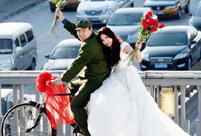 Chinese Dream: the Chinese Spirit and the Chinese Way
Chinese Dream: the Chinese Spirit and the Chinese Way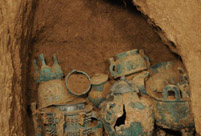 51 bronze sacrificial utensils unearthed in Shaanxi
51 bronze sacrificial utensils unearthed in Shaanxi Most gorgeous female celebs in Chi-pao
Most gorgeous female celebs in Chi-pao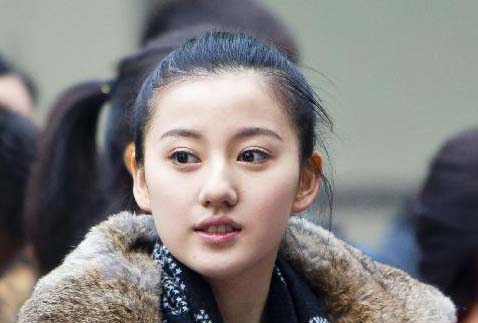 Second round of test kicks off at Beijing Film Academy
Second round of test kicks off at Beijing Film Academy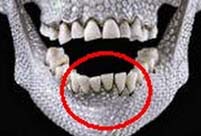 Ancient Qiang people had vertically grown teeth
Ancient Qiang people had vertically grown teeth Top 10 Chinese youth’s favorite seaside destinations
Top 10 Chinese youth’s favorite seaside destinations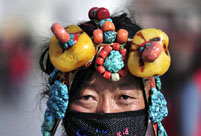 Traditional Tibetan clothing tailors
Traditional Tibetan clothing tailors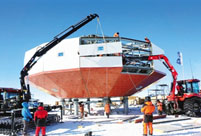 In photos: Unveiling Taishan station
In photos: Unveiling Taishan station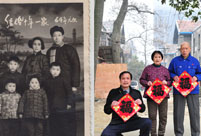 Beautiful moments of family reunion
Beautiful moments of family reunion Chinese warplanes C919 to appear at Singapore Airshow
Chinese warplanes C919 to appear at Singapore Airshow Ruins of Shang Dynasty's structure unearthed in Shaanxi
Ruins of Shang Dynasty's structure unearthed in Shaanxi  Intercity high speed train in operation
Intercity high speed train in operation Severe coldness freezes large parts of China
Severe coldness freezes large parts of China  Beautiful moments of Sochi
Beautiful moments of Sochi  It's not just performing this year
It's not just performing this yearDay|Week|Month